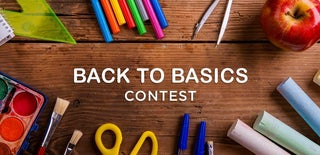Introduction: STEAM Frisbee
Introduction
The Frisbee or flying disc has been in circulation just shy of a century. It has evolved from metal lids and pie tins to the plastic Frisbee of today. The evolution has not ended there, weight, material and ridges effect aerodynamics.
This instructable will utilize STEAM (Science, Technology, Engineering, Arts and Math) principles to create a flying disc, aka Frisbee. You will be exposed to Bemoulli’s Principle and Newton’s Laws. Physical concepts of aerodynamic lift and gyroscopic stability. Along with the forces and torque that keep the disc aloft.
Let us begin to make a STEAM Frisbee.
Next Objective, Supplies & Tools
Step 1: Objective, Supplies & Tools
Objective:
A STEAM project has a clear problem to solve or goal.
Make a Frisbee, launch it and see how far it flies.
Supplies:
Disc Template,
Cardboard,
Newspaper,
Plastic plates,
Stickers,
Duct tape and
Paper clips.
Tools:
Scissors,
Utility knife,
Tape measure and
Crayons and Markers.
Next Details
Step 2: Details
Details:
Elements contributing to the problem, during this stage; understand the principles on how something works. This is presented through classroom explanation and examples.
Lift: the force to keep the Frisbee in the air.
Thrust: the force to keep the Frisbee in a forward motion.
Gravity: the force that pulls everything down.
Drag: the force that opposes thrust.
Newton’s Laws of Motion:
1st Law: An object at rest will remain at rest while an object in motion will remain in motion, until an external force is applied.
3rd Law: For every action there is an equal and opposite reaction.
Bernoulli Principle: the speed of a fluid (air, in this case) determines the amount of pressure that a fluid (air) can exert. In other words, the air traveling over the top has less pressure than the air beneath. To provide the lift needed to make the Frisbee fly. This principle is the foundation of aerodynamics and how airplanes transport you and goods to and from Poughkeepsie and beyond.
Gyroscopic stability: the faster something spins the more stable it spins on the same plane. You can see this effect in the trajectory of a football and the balance of a bicycle wheel while riding.
The above-mentioned forces can be calculated with the use of formulas.
Next Discovery
Step 3: Discovery
Discovery:
Active research, during this stage use the computer to review existing designs.
Frisbees come in many different diameters and weights, with and without a solid center, plastic and nylon material, length of rim or weighted edge.
The tendency of spinning objects is to roll right or left in flight, depending on the direction of their spin. Throw a disc clockwise the disc will fall left. Throw a disc counterclockwise will fall right.
Next Application
Step 4: Application
Application:
Create the Frisbee, during this stage collaborate and work through (test) your prototype.
Change the weight of the Frisbee by adding more discs, remove the center of the disc, taper the center above or below the Frisbee. Change the rim from paper to cardboard, use extra tape, add paper clips, etc. Collect data and modify the design as needed.
Note: Talk with fellow creators, take chances, try, try and try something until you find a solution.
Next Make the Frisbee
Step 5: Make the Frisbee
1) Trace the template to create a disc.
2) Cut out the disc.
3) Make a rim, I rolled some newspaper.
4) Tape the rim to the disc.
5) Decorate.
Test and modify as needed.
Before you proceed to the Presentation Stage add stickers, colorful designs, symbols, etc. This is where you Sign your Design.
Next Presentation
Step 6: Presentation
Presentation:
Show off, during this stage put your design to the test against other designs. During the this stage watch and take note of other designs and learn from them.
See how far the Frisbee will fly. Launch your Frisbee 3 times, measure how far then divide by 3 to find the average distance of your Frisbee.
Next Assessment
Step 7: Assessment
Assessment:
Review and revise design, during this stage give and receive peer review and critique. Take notes of other designs and critiques, then learn from them.
This design lacked stability. I added a ridge and some card stock for weight. Both of which provided the stability needed.
Next Observations and Summary
Step 8: Observations & Summary
Observations:
This instructable can be used in a classroom or group setting. Encourage young minds to explore, create and work through unforeseen events to prepare the innovators, educators and leaders of tomorrow.
I learned a lot about aerodynamics and had fun making different Frisbees.
The benefits of this instructable are:
1) Easy to make, scale to the age group.
2) Develop critical thinking and collaboration skills.
3) It is Fun.
Summary:
I am satisfied with the results.

Participated in the
Back to Basics Contest











